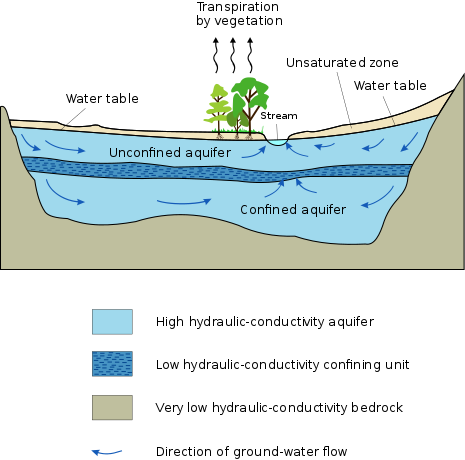How flood water can be captured to help ride out storms
780 million people worldwide do not have access to clean water – but flood and rain water are increasingly being used to help communities adapt to climate change. Enhancing management of water underground is one of the keys.
T
he global water crisis is showing no signs of slowing down. According to the Center for Disease Control and Prevention, 780 million people worldwide do not have access to clean water. At the same time, flooding and heavy rainfall have increased 50% across the globe in the last decade.
Flood water in most reported scenarios is damaging and can be hazardous to health, as it often contains human and livestock waste, industrial waste, downed power lines and harmful physical objects. But what if people could make flood water and rain water work their advantage? They can.
Aquifers
On the flipside, flood water can be used to help communities withstand the world’s surge of extreme weather including storms, droughts, and sea-level rise. Different techniques such as managed aquifer recharge (MAR), which enhances the underground storage of water to make fresh water available, and off-grid solutions are having a positive impact in some communities.
In Texas, flood water is being captured and put into aquifers, and more than 1,000 MAR initiatives are happening in 50 countries. That being said, since the 1960s, MAR implementation has accelerated at a rate of 5% per year, which is not keeping up with the rise of extraction of groundwater—the water that fills empty spaces and cracks under the earth’s surface. This water supplies much of the US’s domestic water supply, supports agriculture, and flows into fresh bodies of water. According to Hydrogeology Journal, MAR has reached an estimated 10 km3/year, ~2.4% of groundwater extraction in countries reporting MAR.

In a recent Nature paper focused on African groundwater resilience, Mark Cuthbert, researcher and fellow at Cardiff University, highlighted MAR as a potential adaptation highway for taking advantage of projected increased flood flows in some parts of sub Saharan Africa, where 1 in 3 people lack access to safe water. Due to its widespread availability, groundwater is vital in helping the region adapt to drought and other climate extremities.
“Essentially, while MAR has been expanding significantly over the last few decades, there is still a massive untapped potential for future development,” says Cuthbert. However, it’s feasibility is highly dependent on the local hydrogeology, and appropriate water governance structures are needed to ensure its long-term effectiveness.”
Off-grid Solutions
As for using rain water for survival and adaptation purposes, the Israel-based startup, Hilico, has a solution. The company’s portable rain harvesting device was created in direct response to the growing water crisis. Using a leaf-like tarpaulin, it collects rain water and filters it twice, before storing it in expandable jerry cans.
“After spending time doing disaster relief in off-grid regions, we came up with the idea to build a simple system by using biomimicry to imitate nature,” says Eyal Yassky, cofounder and CEO of Hilico.
As extreme weather conditions increase around the world, trends in rain harvesting and water storage are seeing growth. Cross-collaboration among governments and the private sector will be key moving forward.
The ideas presented in this article aim to inspire adaptation action – they are the views of the author and do not necessarily reflect those of the Global Center on Adaptation.